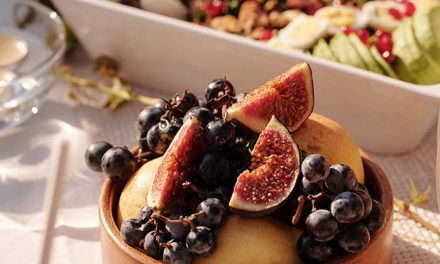We often talk about nutrient-rich foods that are good for our health—for example, iron-rich foods, calcium-rich foods, etc. But what we tend to miss is the right nutrient pairing that enhances absorption of the nutrients into the body. In simple words, we can say some nutrients like to work in pairs to provide targeted health benefits.
4 Nutrient Pairings That Increase Their Absorption
Following are some of the most common food pairings that increase nutrient absorption.
Nutrient Pairing – Vitamin C and Iron
Iron from plant sources, also called non-heme iron, is absorbed effectively in the presence of food rich in Vitamin C. In other words, the absorption of iron from vegetarian meals is directly proportional to the amount of Vitamin C present in it. Therefore, don’t forget to pair up food rich in Iron and Vitamin C.

Easy Side Salad
How? Squeeze some extra lemon to your pulses and green leafy vegetables—even meal accompaniments like mint-coriander chutney are great ways to add Vitamin C to the diet.
Nutrient Pairing – Calcium and Vitamin D
This is a fat-soluble vitamin and mineral combination that help keep bones healthy. We all know children have increased requirements of calcium and vitamin D to support growth and development. In this scenario, we should aim to include calcium-rich sources in the diet and maximize absorption. Calcium and Vitamin D work together to build strong bones.
How? Offer your child calcium-rich sources such as dark green leafy vegetables, milk products, sesame seeds etc., along with sources rich in Vitamin D such as egg yolk, fortified milk with vitamin D, fish etc. Moreover, natural sunlight tops the list in the case of Vitamin D rich sources.
Mutual Supplementation
Protein is one of the essential macronutrients. In the early phase of life, if a child doesn’t get enough protein, it may hinder growth and development. Here, we have to ensure that the child receives adequate protein as per the requirement and confirms good quality. Good quality protein is also called the complete protein, one that provides all the essential amino acids. Protein sources from animals such as milk, eggs, etc., are complete proteins. In comparison, protein from plant sources such as pulses, cereals, etc., is incomplete. Hence, here we need mutual supplementation.
How? Combinations such as Dal Roti, Khichadi and Idli Sambar are examples of complete proteins, as cereal and pulses mutually supplement each other.
You may also like to read – Monsoon Nutrition: Tips To Stay Healthy This Season
Fat and Fat-Soluble Vitamins
Our body absorbs specific vitamins such as A, D, E and K in the presence of fats. In the absence of fats, the absorption of fat-soluble vitamins gets affected, resulting in nutritional deficiencies. Hence, a parent must ensure pairing fats with sources of these vitamins. The next time, whenever you prepare a meal for your kid, start nutrient pairing to improve the nutritional quality of the diet.
How? Cook green leafy vegetables, carrots in the presence of fats, drizzling oil in salads etc.
References






